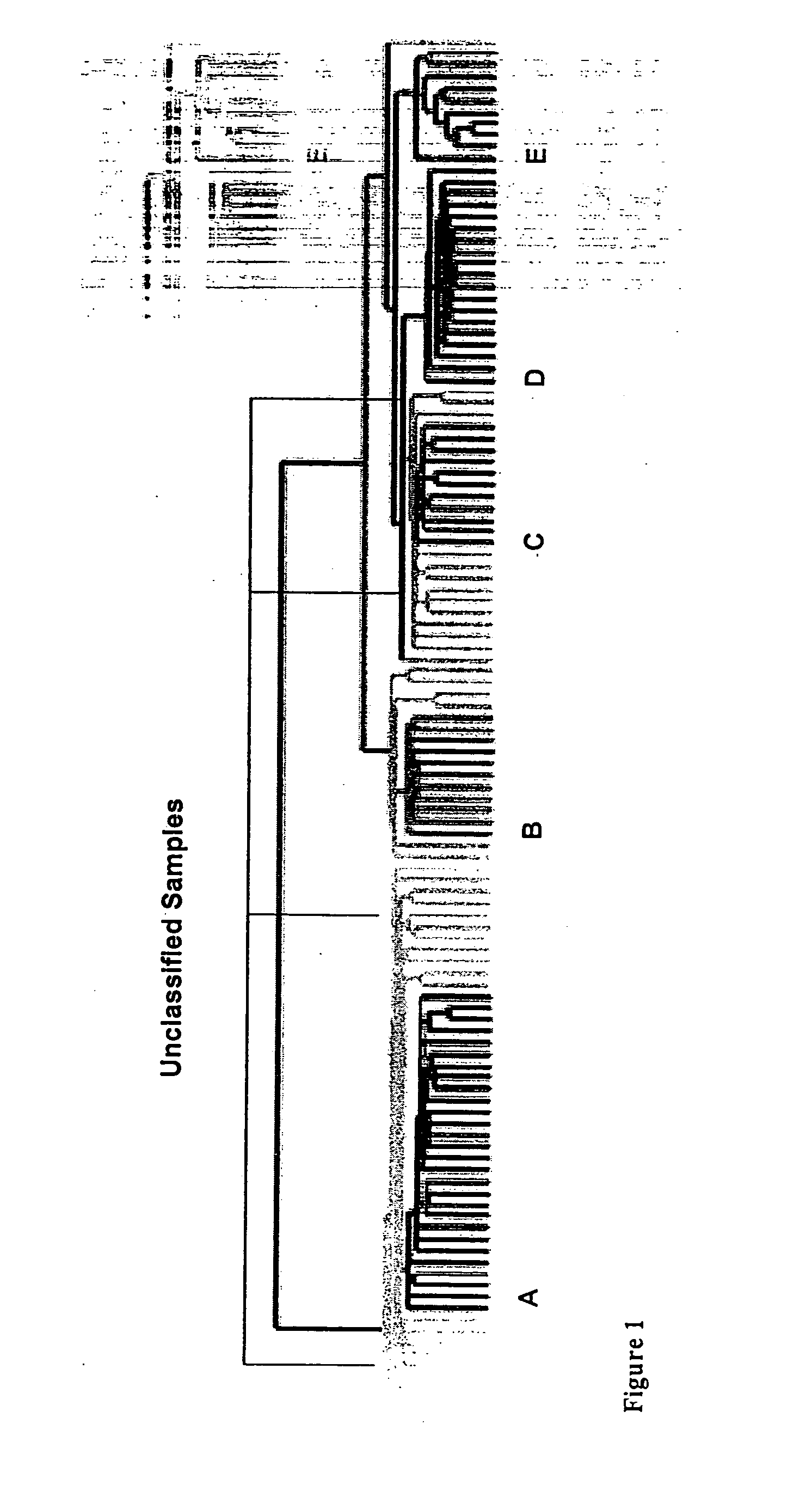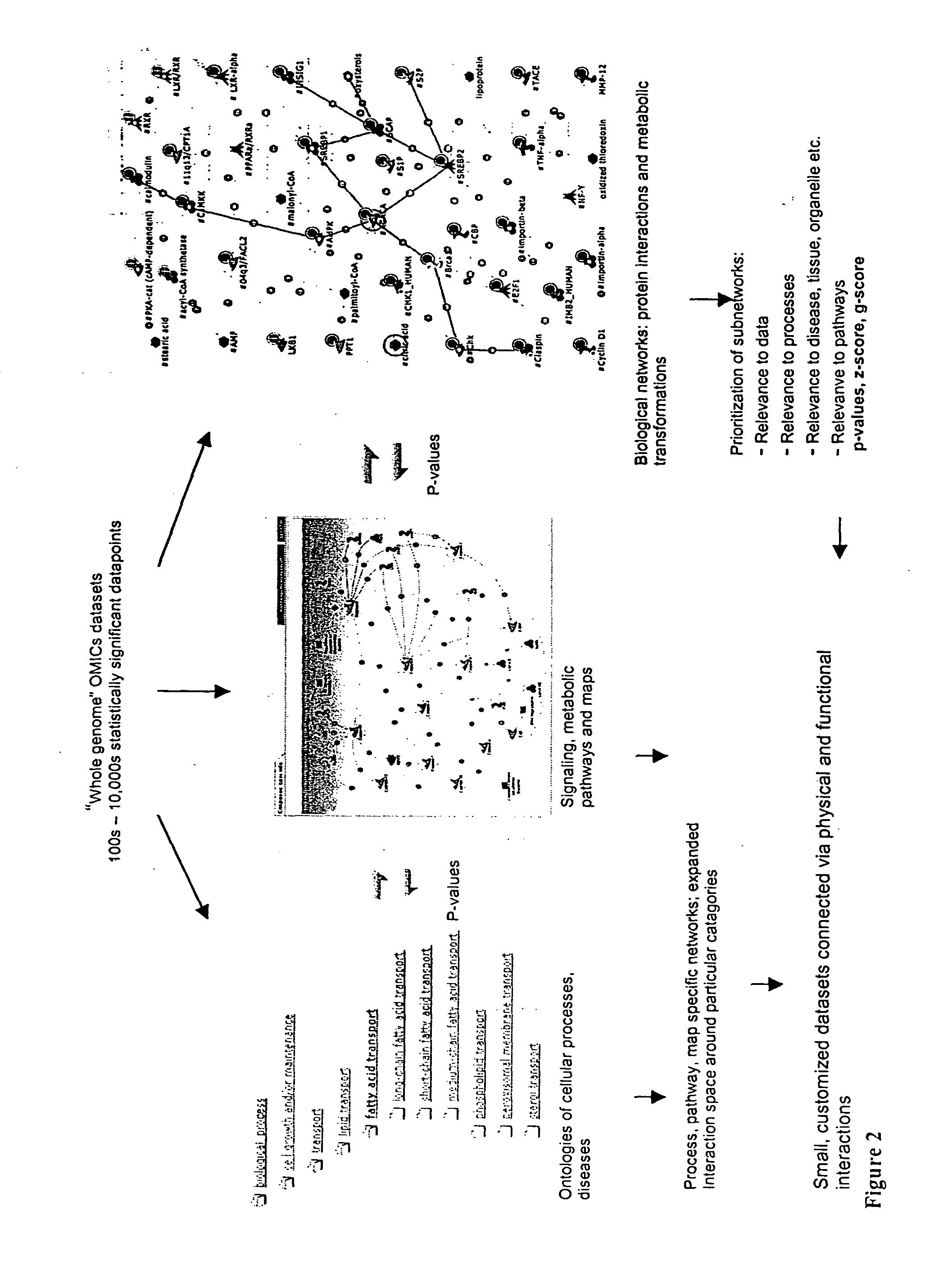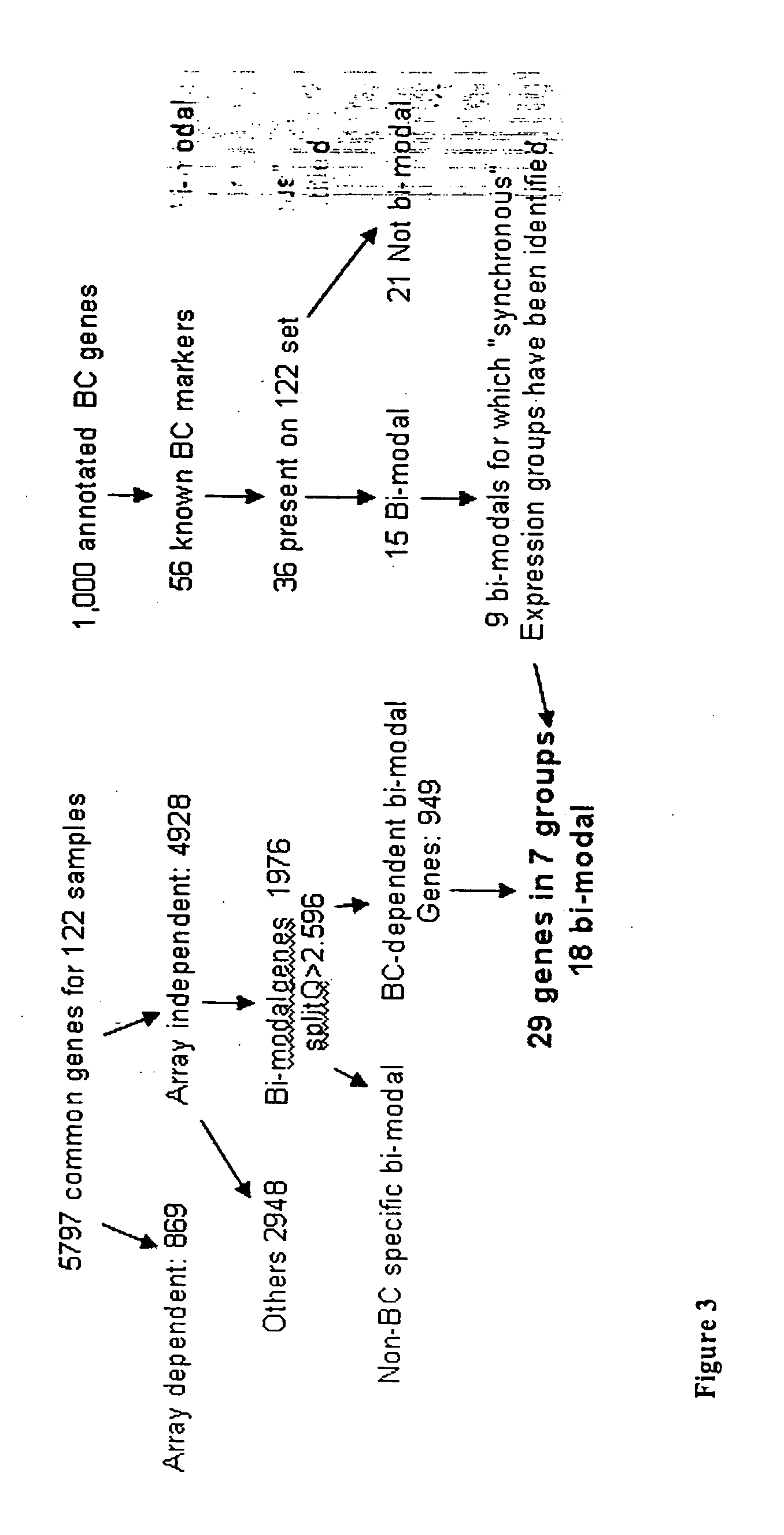Novel methods for functional analysis of high-throughput experimental data and gene groups identified therefrom
a technology of high-throughput experimental data and functional analysis, applied in the field of new methods for functional analysis of high-throughput experimental data and gene groups identified therefrom, can solve the problems of low rate of unclassifiable patients, inability to apply ht biology methods in clinics, and inability to meet the needs of patients,
- Summary
- Abstract
- Description
- Claims
- Application Information
AI Technical Summary
Benefits of technology
Problems solved by technology
Method used
Image
Examples
Embodiment Construction
[0043]The latest challenge for the pharmacogenetics industry is to develop effective and efficient methods for analyzing pathway databases to predict potential new drugs or treatments. Alternatively, the databases may be used to evaluate proposed new drugs or treatments against the pathway databases to predict adverse and side effects that may be expected before expensive clinical trials are begun.
[0044]Regulatory assessment of potential toxicant hazards is mandated for both food and drug compounds (FDA) and for industrial chemicals and commercial compounds that will be released into the environment (EPA). For both of these broad categories, risk assessment of toxicity from chemical or drug exposure is comprised of two related processes: hazard characterization and exposure assessment. It is widely accepted that a mechanistic understanding of the interaction of chemicals and living systems is required for a full evaluation of drug and chemical safety. The majority of ‘omics-based st...
PUM
| Property | Measurement | Unit |
|---|---|---|
| width | aaaaa | aaaaa |
| imaging | aaaaa | aaaaa |
| two dimensional non- | aaaaa | aaaaa |
Abstract
Description
Claims
Application Information
 Login to View More
Login to View More - R&D
- Intellectual Property
- Life Sciences
- Materials
- Tech Scout
- Unparalleled Data Quality
- Higher Quality Content
- 60% Fewer Hallucinations
Browse by: Latest US Patents, China's latest patents, Technical Efficacy Thesaurus, Application Domain, Technology Topic, Popular Technical Reports.
© 2025 PatSnap. All rights reserved.Legal|Privacy policy|Modern Slavery Act Transparency Statement|Sitemap|About US| Contact US: help@patsnap.com



